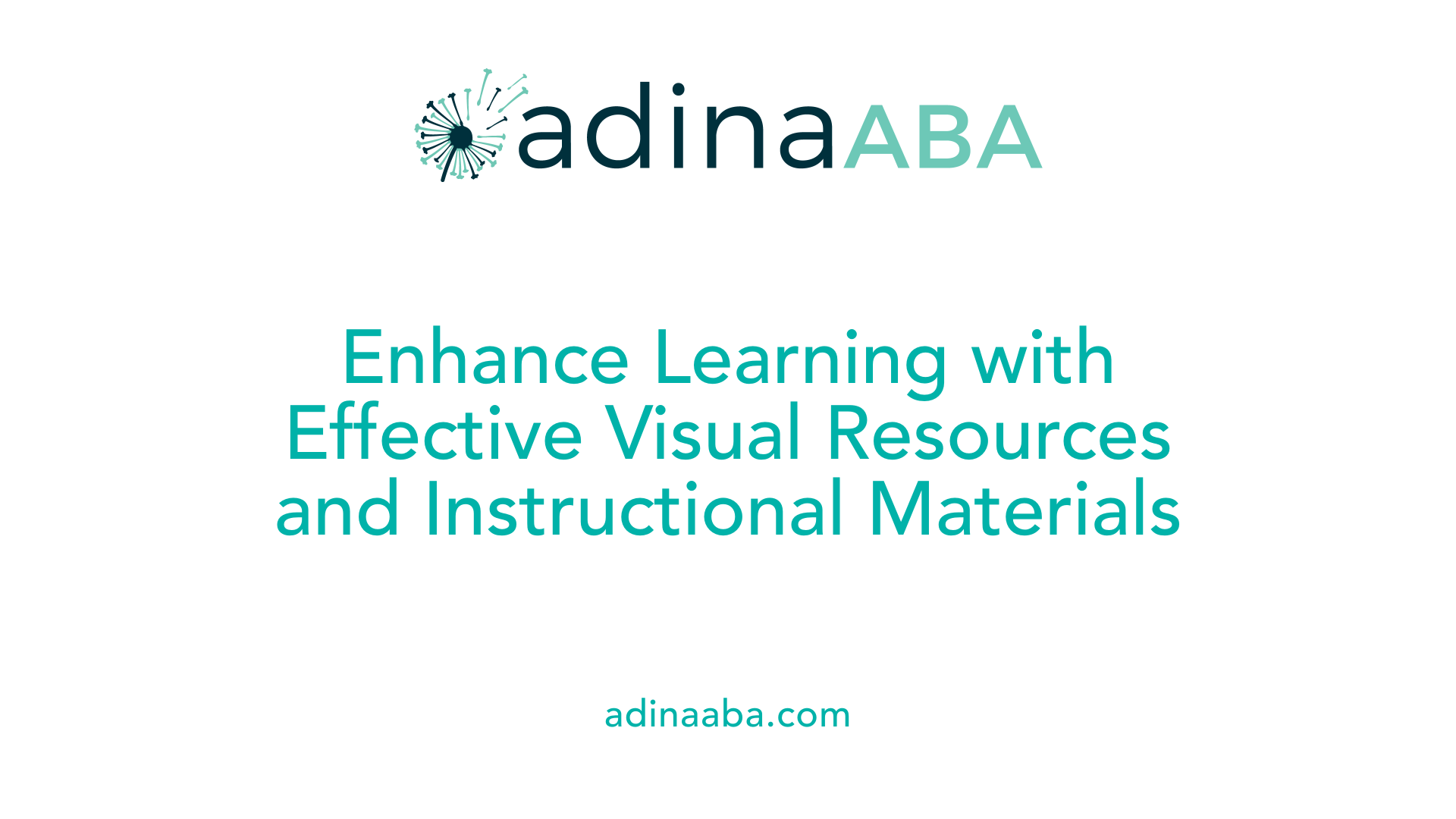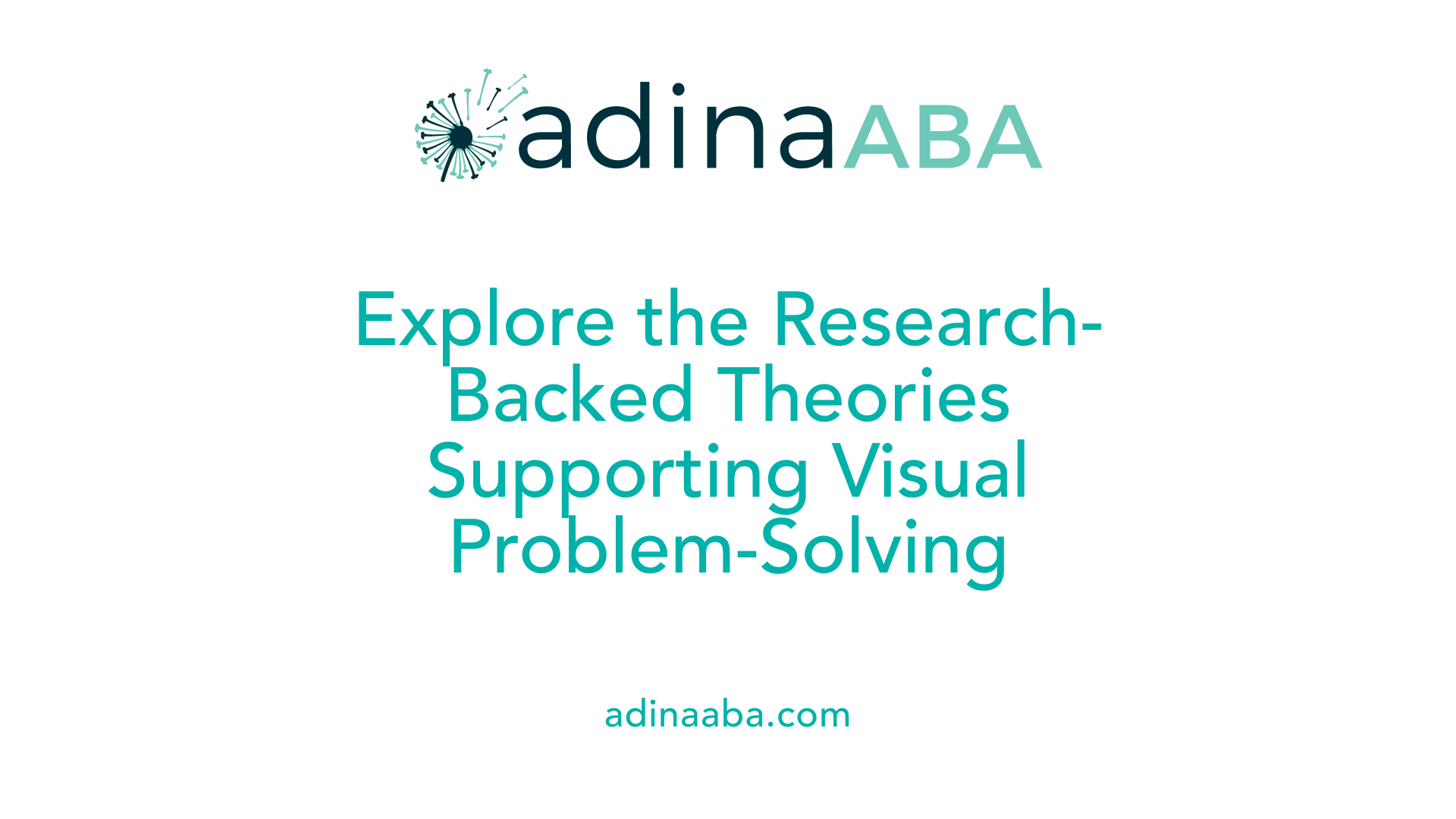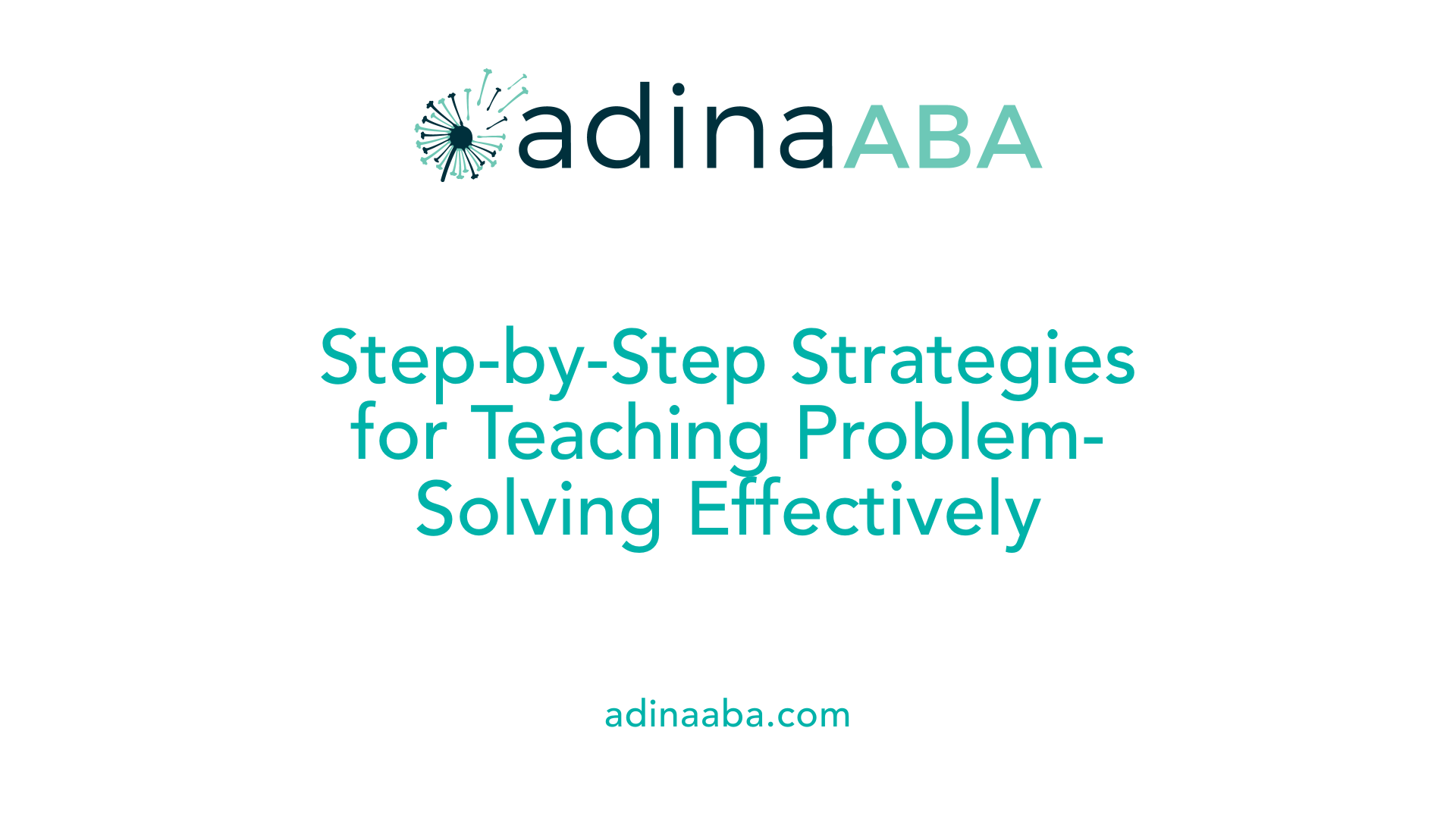How to teach problem-solving using visual strategies

Unlocking the Power of Visual Strategies in Teaching
Effective problem-solving education necessitates engaging students through visual strategies that make abstract concepts concrete, foster critical thinking, and enhance comprehension across diverse learner populations. This article explores evidence-based methods, techniques, resources, and theoretical underpinnings that enable educators to incorporate visual representations into their problem-solving instruction, ultimately boosting student achievement and confidence.
Foundational Visual Methods in Problem-Solving Instruction
Why use visual representations before introducing equations?
Using visual representations early in problem-solving helps students organize information, distinguish relevant data, and clarify the goal of the problem. It encourages better mathematical reasoning by allowing learners to see relationships between different parts of the problem.
What types of visual models are commonly used?
Various forms of visual models support understanding in math. These include:
| Visual Model | Description | Common Uses |
|---|---|---|
| Tables | Organize data systematically for comparison or analysis | Data analysis, pattern recognition |
| Strip Diagrams | Show relationships and parts of a whole | Multi-step word problems, fractions |
| Percent Bars | Visualize proportions and comparisons | Percentages, ratios |
| Number Lines | Represent numerical relationships and operations | Addition, subtraction, estimations |
Consistent use of tools like number lines or strip diagrams helps students become comfortable with these methods, making it easier to apply them independently.
How does systematic use of visuals like number lines benefit students?
Regularly incorporating visuals such as number lines or strip diagrams reduces dependence on narrative descriptions. It allows students to visualize abstract concepts and develop a more intuitive understanding of mathematical relationships, which enhances problem-solving accuracy.
What are effective teaching methods with visual tools?
Effective strategies include modeling the use of visual representations and explaining why specific visuals are appropriate for particular problems. Teachers should think aloud, demonstrating their reasoning, which helps students learn how to select and create the right visual tools. Explicit instruction on developing and employing visual models simplifies complex ideas, especially for learners who struggle with math.
How can visual models improve mathematical understanding?
Research shows that students who use accurate visual representations are six times more likely to solve problems correctly. Visual tools like manipulatives, schematic diagrams, and graphic organizers bridge concrete understanding and abstract reasoning. Programs like COMPS (Conceptual Model-Based Problem Solving) further support students by connecting visual models to algebraic concepts, making problem-solving more accessible.
What about visual methods for young children?
In preschool, visual imagery can help with categorization tasks. When children are prompted to imagine scenes or objects, their responses increase significantly, assisting early learning. Visual approaches are also crucial for teaching foundational number concepts through manipulatives, number lines, and pictorial representations, progressively building skills for more complex mathematics.
The Role and Impact of Visual Models in Mathematics and Problem-Solving
What is the role of visual representations in problem-solving education?
Visual representations are fundamental tools in teaching mathematics and problem-solving because they depict quantities and relationships visually, directly reflecting students’ understanding of concepts. These models include diagrams, graphs, charts, manipulatives, and schematic drawings that help students interpret and analyze problems more effectively.
Using well-chosen visual models allows students to organize information systematically, making abstract ideas more concrete. For example, part-whole diagrams and comparison models help students see the relationship between different quantities, while algebraic models simplify complex expressions and relationships.
Explicit instruction is critical in teaching students how to select and employ the appropriate visual tools. This practice is especially vital for students with learning disabilities, who often benefit from concrete and visual supports. By linking visual models with problem-solving strategies, educators enable learners to develop mental models, improve comprehension, and solve complex problems more confidently.
Visual representations also promote critical thinking. When students are encouraged to draw diagrams or use manipulatives, they move beyond surface-level keyword matching and instead focus on underlying structures of problems. This approach fosters deeper understanding, allowing students to tackle a broad spectrum of mathematical challenges.
Use of manipulatives and schematic diagrams in early grades
Manipulatives—physical objects like counters, blocks, or beads—serve as invaluable visual aids, especially in early grades. They provide tactile experiences that help students understand fundamental concepts such as addition, subtraction, and place value.
In the upper elementary grades, schematic diagrams like strip diagrams or pictorial representations become more prevalent. These visuals assist in understanding multi-step problems and more complex relationships, such as ratios and proportions.
Models such as number lines are effective in teaching early addition and subtraction, helping students create mental maps of numerical space. Pictorial representations of multi-digit operations clarify place value concepts and aid in grasping advanced addition or subtraction problems.
Transitioning from concrete to abstract with CRA framework
The Concrete-Representational-Abstract (CRA) framework offers a systematic approach to developing mathematical understanding. It guides students from manipulating physical objects (concrete), to drawing pictures or diagrams (representational), and finally to solving problems using symbols and algebraic expressions (abstract).
This gradual progression supports learners in constructing a deep understanding of mathematical relationships. For example, students first use counters to model an addition problem, then represent it with a drawing, and ultimately write the corresponding equation.
The CRA method ensures that students do not jump prematurely into abstract reasoning, reducing confusion and building confidence in their problem-solving skills.
Connecting manipulatives with algebraic models to facilitate understanding
Linking concrete manipulatives with symbolic algebraic models bridges the gap between physical understanding and abstract reasoning. For instance, students can use counters to represent terms in an algebraic equation, enabling them to visualize and manipulate the components of an expression.
This connection deepens comprehension of additive and multiplicative relationships. When students see how manipulative arrangements correspond to algebraic formulas, they develop a more intuitive grasp of mathematical operations.
Research indicates that such integrated approaches improve problem-solving accuracy and promote transfer of skills to new contexts. Incorporating visual models into instruction empowers students to analyze problem structures critically, leading to more effective and confident mathematical reasoning.
Visual Thinking Strategies (VTS): Developing Observation, Analysis, and Critical Thinking
What is Visual Thinking Strategies (VTS)?
Visual Thinking Strategies (VTS) is an inquiry-based teaching method that centers around analyzing and discussing visual images to improve students’ observational, analytical, and interpretative skills. Created by Phillip Yenawine and Abigail Housen, VTS encourages learners to engage deeply with artworks or photographs, fostering critical thinking and language development.
During VTS sessions, teachers facilitate discussions by posing three fundamental questions: 'What’s going on in this picture?', 'What do you see that makes you say that?', and 'What more can we find?'. These open-ended queries prompt students to observe carefully, justify their opinions with evidence, and remain open to new interpretations.
The teacher acts as a neutral guide, paraphrasing responses to promote reflection while avoiding personal interpretations or art historical commentary. This approach creates a safe space where students can share ideas, challenge assumptions, and develop reasoning skills.
By focusing on evidence-based reasoning and respectful dialogue, VTS enhances not only critical thinking but also language skills and visual literacy. It can be integrated into various education levels and diverse classroom settings, promoting an active and inclusive learning environment.
Introduction of VTS by Phillip Yenawine and Abigail Housen
Phillip Yenawine, associated with the Museum of Modern Art, and Abigail Housen from Columbia University, developed VTS in 1991 after extensive research on aesthetic development. Their goal was to create a structured yet flexible discussion framework that helps students interpret visual art meaningfully.
Their research showed that engaging students in thoughtful analysis of art improves their ability to observe details, articulate ideas, and think critically about visual information.
Use of Diverse Artworks and Images for Engagement
A central component of VTS is the use of a wide variety of visual materials, ranging from classical paintings to contemporary photographs and everyday images. This diversity captures students’ interest and makes the strategy applicable across different contexts and subject matters.
Using different artworks allows educators to connect visual analysis to many themes and disciplines, promoting interdisciplinary learning and cultural awareness.
Adaptation for Students with Diverse Needs, Including Visual Impairments
VTS can be tailored to support students with different abilities, including those with visual impairments. While the core focus is on observation, teachers can adapt by emphasizing descriptive language and auditory cues.
For students with visual limitations, discussing the context, textures, sounds, and other sensory information associated with images can help them participate actively in the discussion. This inclusive approach ensures that VTS benefits all learners and fosters a culture of accessible visual literacy.
| Aspect | Description | Additional Details |
|---|---|---|
| Developed by | Phillip Yenawine and Abigail Housen | 1991, based on research in aesthetic development |
| Core questions | 'What’s going on?', 'What do you see?', 'What more? | Facilitates evidence-based discussion |
| Used in | Schools, museums, community programs | Promotes visual literacy and critical thinking |
| Adaptations for | Visual impairments and diverse learners | Focus on descriptive language and sensory details |
By implementing VTS, educators can nurture students’ ability to observe carefully, reason logically, and articulate their ideas confidently, all while appreciating the power of visual art as a learning tool.
Visual Strategies for Diverse Learners and Special Needs Students

How can visual strategies be adapted for students with visual impairments and learning disabilities?
Visual strategies are essential tools in inclusive education, but they require careful adaptation for students with visual impairments or learning disabilities. For students with visual impairments, tactile and auditory cues become crucial. Teachers can use textured materials, Braille labels, and audio descriptions alongside traditional visual aids. For learners with cognitive or learning disabilities, visual supports such as simplified graphic organizers, color-coded cue cards, and large, high-contrast visuals help clarify concepts and routines.
Teachers can also utilize technology, such as screen readers and enlarging devices, to ensure access. The goal is to create multi-sensory learning environments where visual elements are complemented by auditory and tactile inputs. This approach allows every student to engage with content in ways suited to their abilities, promoting understanding and independence.
Why is explicit instruction and scaffolding important in teaching problem-solving to students with special needs?
Explicit instruction involves clear, direct teaching of problem-solving steps, often breaking tasks into smaller, manageable parts. For students with learning disabilities, this method prevents overwhelm and helps build confidence about tackling complex problems. Teachers model each step aloud, demonstrating thought processes visually and verbally.
Scaffolding supports students by gradually reducing assistance as their skills improve. For example, initially providing detailed prompts or visual cues, then slowly removing them encourages independence. Using graphic organizers or visual step charts helps students internalize the process. This structured approach ensures retention and transfer of skills across various contexts.
How do prompts, process questions, and peer collaboration support diverse learners?
Prompting involves using questions or cues to guide students toward problem-solving strategies without giving the answer directly. Process questions like “What information do you need to find?” or “What is the first step?” activate critical thinking and self-regulation.
Encouraging peer collaboration fosters social and cognitive development. Students can share different perspectives, explain reasoning, and learn collaboratively. Pairing students with varying abilities allows the more advanced to model strategies, while the less confident gain support.
These methods create a scaffolded environment that promotes understanding, confidence, and independence in problem-solving.
How can multi-sensory, hands-on activities and manipulatives be incorporated into teaching diverse learners?
Multi-sensory activities engage multiple senses, helping students process information more effectively. Manipulatives, such as blocks, counters, or pattern tiles, provide concrete representations of abstract concepts, making them accessible especially for learners with developmental challenges.
Activities like sorting, building models, or physical role-playing enable students to explore problem scenarios actively. Using visual aids like number lines, graphic organizers, or pictorial cues alongside manipulatives reinforces understanding.
By integrating these hands-on approaches, teachers cater to different learning styles, boost engagement, and strengthen conceptual understanding. Regular use of manipulatives and sensory experiences encourages exploration and allows students to develop strategies that they can transfer to more abstract levels of problem-solving.
Utilizing Resources, Posters, and Instructional Materials for Visual Teaching
 Availability of posters, visual aids, templates, and digital tools plays a crucial role in effective visual teaching. Educators have access to a wide range of resources designed to make complex concepts more understandable and engaging for students. Visual aids such as posters often depict key ideas through images, diagrams, and infographics, helping students organize information and enhance comprehension.
Availability of posters, visual aids, templates, and digital tools plays a crucial role in effective visual teaching. Educators have access to a wide range of resources designed to make complex concepts more understandable and engaging for students. Visual aids such as posters often depict key ideas through images, diagrams, and infographics, helping students organize information and enhance comprehension.
Teachers can customize and modify these visual materials to suit diverse learning needs. For example, they can adapt posters by enlarging text, adding high-contrast colors, or including tactile features to support students with visual impairments. Digital tools and templates facilitate the creation and digitization of visual supports, ensuring accessibility and ease of updates. Graphic libraries and online platforms offer ready-made visual resources that can be tailored to specific lessons or student needs.
Using visual supports like posters, charts, and symbol systems helps clarify routines, promote behavioral expectations, and facilitate social-emotional learning. For example, visual schedules and social story posters assist children in understanding daily routines and social interactions. These visual tools serve as constant cues, reinforcing learning and independence.
In addition to static posters, digital resources and apps enable interactive and dynamic visual representations, encouraging active participation. Educators can incorporate videos, virtual whiteboards, and interactive slides to diversify teaching strategies. This variety helps reach visual learners and supports visual thinking strategies that deepen understanding.
Overall, a well-stocked collection of visual materials enhances the teaching of problem-solving skills by providing concrete, easily understandable cues. Resources, posters, and templates are fundamental in creating an accessible, inclusive learning environment that fosters critical thinking and independence.
| Resource Type | Purpose | Accessibility Features |
|---|---|---|
| Posters and charts | Visualizing concepts, routines, and processes | High contrast, large font, tactile options for impairments |
| Templates and graphic organizers | Structuring ideas and problem-solving steps | Customizable, digital formats |
| Digital tools and apps | Interactive learning and visual modeling | Compatibility with screen readers, zoom features |
| Symbol systems and cue cards | Supporting communication and social skills | Clear symbols, simple language |
Theoretical Foundations and Research-Based Principles in Visual Problem-Solving Education

What are the theoretical frameworks or research-based methods underlying visual problem-solving education?
Educational approaches that utilize visual representations rely on several well-established research-based theories. Central among these is Cognitive Load Theory, which emphasizes designing visual and textual materials in a way that minimizes overload and supports effective learning. By organizing information visually, educators can help students process complex concepts without taxing their working memory.
Another influential framework is the Cognitive Theory of Multimedia Learning. This theory advocates for combining visual and verbal materials to foster deeper understanding. When students see visual representations alongside spoken or written explanations, they can build more coherent mental models, making abstract ideas more accessible.
Research also explains expertise development through models involving schemas, chunks, and scripts—organized knowledge structures that streamline perception and problem-solving. As learners become more experienced, their mental organization improves, enabling faster and more accurate interpretation of visual information.
Eye-tracking studies provide further insights into how visual strategies assist learning. Research shows experienced learners utilize perceptual chunking—grouping visual elements into meaningful units—and focus attention more effectively than novices. These findings inform instructional design by highlighting the importance of guiding students' visual attention.
Finally, Dual Coding Theory supports the idea that integrating images with verbal descriptions enhances understanding, retention, and complex reasoning. When both visual and linguistic codes are used, students create richer cognitive connections, leading to improved problem-solving skills.
Interventions such as Eye-Movement Modeling Examples (EMME) incorporate these principles by showing students how effective visual strategies operate in real-time. These guided videos demonstrate expert visualizations, reinforcing the connection between theory and practice, and helping students adopt more effective visual problem-solving techniques.
Practical Implementation: Teaching Problem-Solving Step-by-Step

What are some best practices and strategies for teaching problem-solving to students with learning disabilities or special needs?
Effective instruction for students with learning disabilities emphasizes clarity and structure. Teachers should break down problem-solving into manageable steps, guiding students explicitly through a process that includes identifying the problem, deciding if help is needed, brainstorming solutions, and choosing the best option.
Using visual aids at each step reinforces understanding and independent application. For example, graphic organizers or step posters can remind students of the process, while visual supports like charts or checklists can help them track their progress.
For early learners and children with special needs, visuals like pictures, symbols, and manipulatives make abstract ideas concrete. Activities such as drawing pictures of the problem or using physical objects to represent quantities can illuminate connections and foster engagement.
Gradually increasing problem complexity is crucial for developing independence. Initially, students work with simple, structured problems using visuals, then progress to more complex tasks requiring them to apply their skills without direct support.
Group exercises and real-world scenarios provide practical application opportunities. Challenges like building towers, role-playing scenarios, or solving puzzles encourage teamwork and help students transfer classroom strategies to everyday situations.
How can teachers systematically use visual aids during each phase?
During the problem identification phase, students use diagrams or drawings to understand what is being asked. Visual representations clarify language and help students organize information.
In the solution-deciding stage, decision trees or flowcharts guide students through options, fostering strategic thinking. Visual cues support self-questioning about possible actions.
While brainstorming solutions, a visual list of ideas encourages creativity and open-mindedness. Students can illustrate or write down multiple approaches, making abstract thinking more tangible.
Finally, when selecting the best solution, comparison charts or pros-and-cons diagrams enable students to weigh options effectively. Visual tools support metacognition and reflective thinking.
How does visual problem-solving benefit young children and early learners?
Young children, especially those in kindergarten and early elementary grades, process information more effectively through visuals. Visual problem-solving strategies, including drawing and manipulatives, help build foundational skills that support later abstract reasoning.
For early learners, visuals like strip diagrams and pictorial representations link concrete experiences to symbolic understanding. These tools enable children to see relationships between parts and wholes, essential for mastering addition, subtraction, and other concepts.
Providing visual supports stimulates engagement, improves memory retention, and encourages independent thinking. Using visuals regularly helps young children develop confidence in their problem-solving abilities.
How can educators encourage gradual independence and handle increasing problem complexity?
Start with straightforward problems that can be solved with minimal guidance, ensuring success early on. Use visual models consistently so students know what to use and when.
As students gain proficiency, introduce problems with additional steps or multiple variables. Gradually reduce scaffolding, prompting students to rely more on their visual strategies.
Explicitly teach students to select and adapt visual tools based on problem requirements. For example, introduce number lines for addition, then switch to strip diagrams for multi-step word problems.
Regular reflective practices, such as reviewing their problem solution process, foster self-monitoring and independent decision-making.
What are some effective group activities and real-world problems to reinforce problem-solving skills?
Group activities like puzzle solving, cooperative building projects, or escape rooms challenge students to collaborate and apply visual strategies in complex situations.
Real-world scenarios, such as planning a simple trip, organizing a classroom event, or solving a shopping problem, ground abstract strategies in familiar contexts. Visual aids like schedules, maps, and charts help students analyze and find solutions.
Incorporating these techniques during classroom activities promotes critical thinking, creativity, and social skills—all essential elements of successful problem-solving.
| Strategy | Description | Example Tools |
|---|---|---|
| Visual aids | Support understanding and reasoning | Graphic organizers, checklists |
| Gradual complexity | Build independence over time | Simple to complex problems |
| Group work | Foster collaboration | Puzzle challenges, scenario role-plays |
| Real-world relevance | Connect learning to everyday life | Scheduling, shopping scenarios |
| Reflection | Encourage metacognition | Self-monitoring checklists |
By integrating these methods into daily lessons, educators create a structured yet adaptable framework that enables students with diverse needs to develop strong problem-solving skills, gradually becoming more autonomous and confident learners.
Enhancing Problem-Solving Skills Through Visual Strategies
Integrating visual strategies into problem-solving education is a powerful approach supported by research and practical experience. From using graphic organizers and visual models to applying inquiry-based discussions like VTS, these methods foster deeper understanding, critical thinking, and confidence. Tailoring visual supports to diverse learners, including those with special needs, ensures inclusivity and effectiveness. Continuous professional development, availability of high-quality resources, and an understanding of foundational theories underpin successful implementation. As educators embrace these strategies, they can significantly improve students’ problem-solving abilities, preparing them for academic success and real-life challenges.
References
- [PDF] Effective Problem-Solving Instruction, Part 1: Visual Representations
- Visual Teaching Strategies to Improve Learning - Lucid Software
- Using Visual Thinking Strategies in the Classroom - Edutopia
- Page 5: Visual Representations - IRIS Center
- Word Problem-Solving: Easy Visual Models For Dyscalculia
- TRAINING PRESCHOOL CHILDREN TO USE VISUAL IMAGINING ...
- [PDF] Using Visual Representations - Institute of Education Sciences
- How to Teach Visual Learners - 10 Effective Ways - SplashLearn
- Visual Models: Your Secret Weapon for Word Problem ...
- Visual Supports Learning Links and Templates
More Resources
Expert Clinicians
Get started today ->






